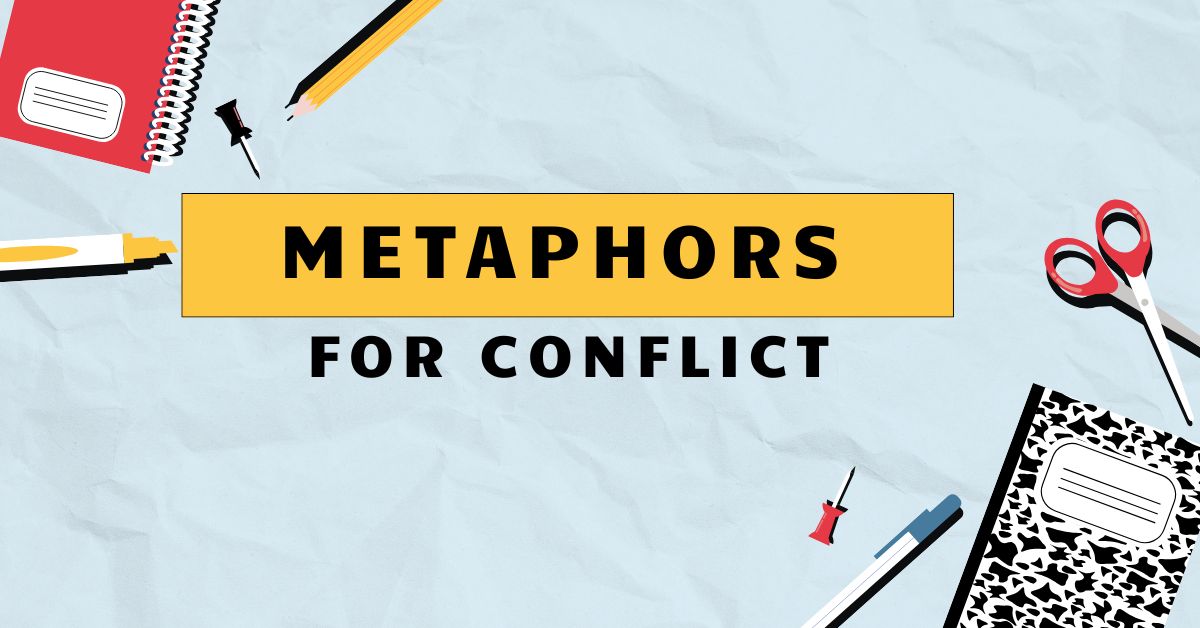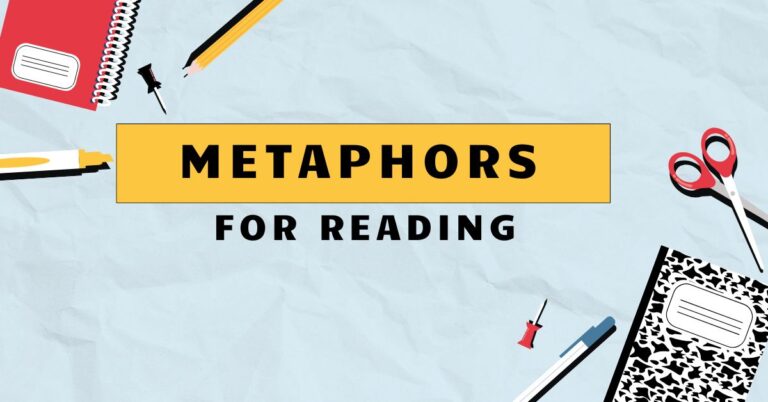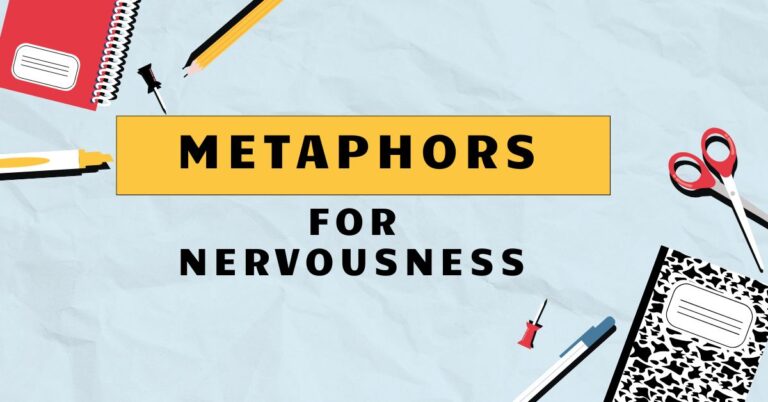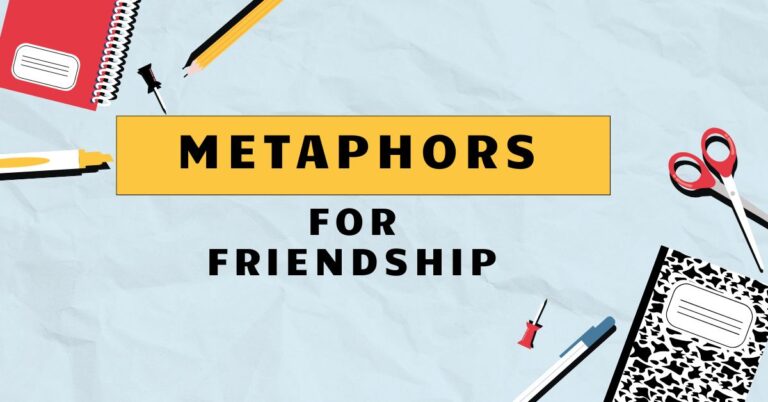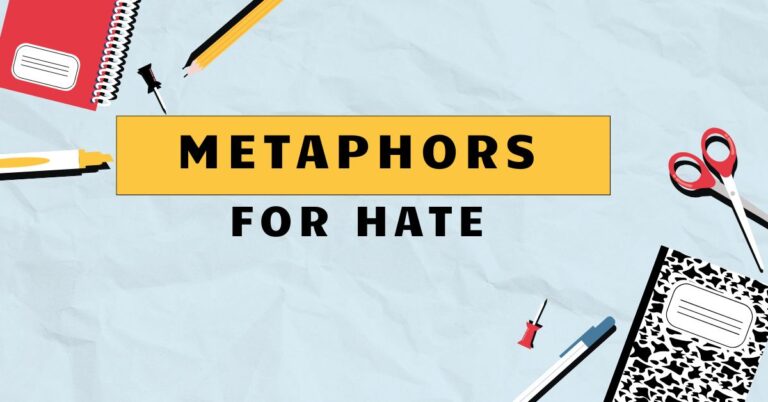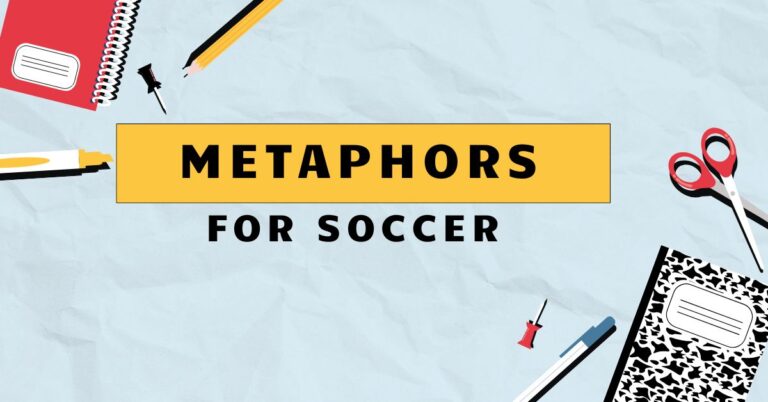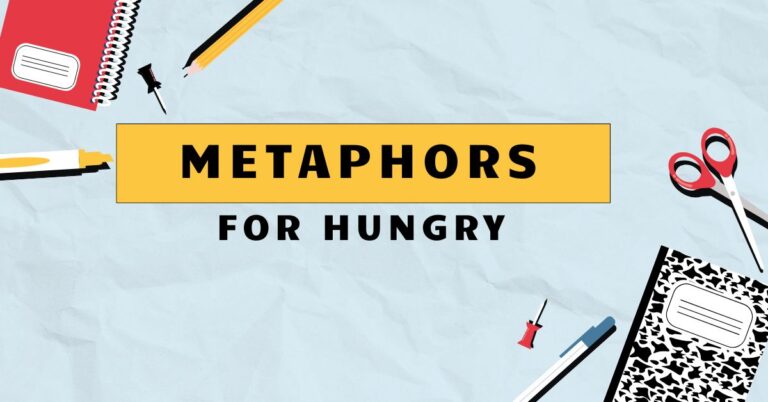43 Metaphors for Conflict: A Comprehensive Guide
Understanding how we use metaphors to describe conflict is crucial for mastering English and enhancing communication. Metaphors shape our perception of conflict, influencing how we approach and resolve disputes.
This guide provides a detailed exploration of metaphors for conflict, offering insights valuable to students, writers, and anyone seeking to improve their understanding of language and conflict resolution.
By examining the types, structures, and usage rules of these metaphors, you’ll gain a deeper appreciation for the nuances of English grammar and rhetoric. This knowledge is essential for effective communication and critical thinking, empowering you to navigate complex situations with clarity and precision.
This article provides many examples and exercises.
Table of Contents
- Introduction
- Definition of Metaphors for Conflict
- Structural Breakdown of Metaphors
- Types of Metaphors for Conflict
- Examples of Metaphors for Conflict
- Usage Rules for Metaphors
- Common Mistakes When Using Metaphors
- Practice Exercises
- Advanced Topics in Metaphorical Usage
- Frequently Asked Questions
- Conclusion
Definition of Metaphors for Conflict
A metaphor is a figure of speech that describes an object or action in a way that isn’t literally true, but helps explain an idea or make a comparison. Metaphors for conflict are specific instances where conflict is understood and described through the lens of another concept, allowing us to frame, understand, and respond to conflict in particular ways.
They allow us to discuss abstract or complex concepts like conflict in more relatable ways.
Metaphors function by highlighting certain aspects of conflict while obscuring others. For instance, describing a conflict as a “battle” emphasizes the adversarial nature and win-lose dynamic, while downplaying the potential for collaboration or compromise.
Similarly, viewing conflict as a “storm” suggests it is a temporary, destructive force that needs to be weathered. Understanding these implications is crucial for effective communication and conflict resolution.
The way we conceptualize conflict impacts how we engage in it.
In the context of grammar, metaphors for conflict are significant because they demonstrate how language shapes our understanding of the world. They also illustrate the creative and expressive power of language, allowing us to convey complex ideas through vivid imagery and comparison.
Recognizing and analyzing these metaphors enhances our ability to interpret and respond to various forms of communication, from literature to everyday conversation.
Structural Breakdown of Metaphors
Metaphors consist of two main elements: thetenorand thevehicle. The tenor is the subject being described (in this case, conflict), and the vehicle is the concept used to describe it.
Understanding this distinction is key to analyzing how metaphors work. The vehicle provides a new way of understanding the tenor.
The relationship between the tenor and vehicle is based on shared characteristics or associations. For example, when we say “the debate was a battlefield,” the tenor is the debate, and the vehicle is the battlefield.
The shared characteristics are the adversarial nature, the struggle for dominance, and the potential for casualties (in this case, arguments or reputations). The vehicle therefore helps us to understand the debate as a combative process.
The effectiveness of a metaphor depends on the clarity and relevance of the shared characteristics. A strong metaphor creates a vivid and insightful connection between the tenor and the vehicle, while a weak metaphor may be confusing or irrelevant.
Analyzing the underlying structure of metaphors allows us to evaluate their effectiveness and understand their impact on our perception of conflict. Consider how the metaphor shapes our understanding of roles, actions, and outcomes within the conflict.
Types of Metaphors for Conflict
Metaphors for conflict can be categorized based on the conceptual domain they draw from. Here are some common types:
War Metaphors
War metaphors are some of the most common ways to describe conflict. They frame conflict as a battle, emphasizing aggression, competition, and the desire to win.
These metaphors often involve military terminology and imagery, such as “attack,” “defense,” “strategy,” and “casualties.”
Using war metaphors can escalate conflict by creating a sense of urgency and hostility. They often discourage collaboration and compromise, as the focus is on defeating the opponent.
While they can be useful for highlighting the intensity of a conflict, they can also be counterproductive if the goal is to find a peaceful resolution.
Game Metaphors
Game metaphors frame conflict as a competition with rules, strategies, and winners and losers. These metaphors often involve terms like “play,” “game plan,” “strategy,” and “opponent.” Unlike war metaphors, game metaphors often imply a more structured and regulated form of conflict.
Game metaphors can be helpful for understanding the strategic aspects of conflict, such as planning and negotiation. They can also create a sense of detachment and objectivity, allowing participants to see the conflict as a challenge to be overcome.
However, they can also trivialize the emotional and personal aspects of conflict.
Physical Force Metaphors
Physical force metaphors describe conflict in terms of physical actions, such as pushing, pulling, or colliding. These metaphors highlight the intensity and impact of conflict, often suggesting a struggle for control or dominance.
Examples include “head-on collision,” “power struggle,” and “under pressure.”
These metaphors can be useful for illustrating the immediate and visceral experience of conflict. They can also convey the sense of being overwhelmed or overpowered.
However, they may oversimplify the complex dynamics of conflict and neglect the role of communication and negotiation.
Obstacle Metaphors
Obstacle metaphors portray conflict as a barrier or impediment that needs to be overcome. These metaphors often involve terms like “hurdle,” “roadblock,” “challenge,” and “setback.” They emphasize the difficulty and frustration of conflict, but also suggest the possibility of progress and resolution.
Obstacle metaphors can be helpful for maintaining a sense of perspective and resilience in the face of conflict. They encourage problem-solving and perseverance, as the goal is to find a way around or through the obstacle.
However, they may downplay the role of interpersonal dynamics and emotional factors in conflict.
Illness Metaphors
Illness metaphors frame conflict as a disease or ailment that needs to be cured. These metaphors often involve terms like “toxic,” “sick,” “contagious,” and “treatment.” They emphasize the negative and destructive aspects of conflict, suggesting that it is harmful and needs to be addressed.
Illness metaphors can be useful for highlighting the need for intervention and healing in conflict situations. They can also create a sense of urgency and concern, motivating people to take action.
However, they may stigmatize conflict and create a sense of blame or guilt.
Journey Metaphors
Journey metaphors describe conflict as a path or voyage with challenges and destinations. These metaphors often involve terms like “crossroads,” “dead end,” “detour,” and “destination.” They emphasize the process and progression of conflict, suggesting that it has a beginning, middle, and end.
Journey metaphors can be helpful for understanding the long-term dynamics of conflict and the importance of planning and strategy. They can also create a sense of hope and optimism, as the goal is to reach a positive destination.
However, they may oversimplify the unpredictable and iterative nature of conflict.
Weather Metaphors
Weather metaphors frame conflict as a force of nature, using terms like “storm,” “tempest,” “calm after the storm,” and “under the weather.” These metaphors often convey the intensity and unpredictability of conflict, as well as its potential for destruction and renewal.
Weather metaphors are useful for illustrating the emotional and environmental impact of conflict. They can also highlight the temporary nature of conflict, suggesting that it will eventually pass.
However, they may downplay the role of human agency and responsibility in conflict resolution.
Animal Metaphors
Animal metaphors describe conflict using animal characteristics and behaviors. These metaphors often involve terms like “lion,” “sheep,” “hawk,” “dove,” and “snake.” They use animalistic traits to characterize the behavior and roles of those in conflict.
Animal metaphors can be helpful for understanding the instinctual and competitive aspects of conflict. They can also create vivid and memorable images, making the conflict more relatable.
However, they may oversimplify the complex motivations and behaviors of people in conflict.
Examples of Metaphors for Conflict
The following tables provide extensive examples of metaphors for conflict, organized by category:
War Metaphors Examples
War metaphors are pervasive in discussions of conflict, often framing disagreements as battles to be won. The following table provides examples of sentences using war metaphors to describe conflict.
These examples illustrate how war metaphors highlight the adversarial and competitive nature of conflict.
| Example Sentence | Analysis |
|---|---|
| The negotiations were a battle of wills. | Highlights the intense competition and determination of each party. |
| They attacked my arguments with relentless criticism. | Frames criticism as an aggressive act aimed at undermining the speaker’s position. |
| We need to defend our position against their claims. | Suggests a need to protect one’s stance from opposing viewpoints. |
| The company launched a preemptive strike against its competitors. | Describes an action taken to gain an advantage before the competition can react. |
| The debate was a war of words. | Highlights the combative nature of the debate. |
| He surrendered to her demands after a long struggle. | Implies a defeat and submission to the opposing party’s wishes. |
| The project was a casualty of budget cuts. | Presents the project as a victim of financial constraints. |
| She fought tooth and nail to get her proposal approved. | Emphasizes the intense effort and determination to achieve a goal. |
| Their relationship was a minefield of unresolved issues. | Suggests a dangerous and unpredictable situation filled with potential problems. |
| The political landscape is a battleground for different ideologies. | Presents the political arena as a site of ongoing conflict between opposing views. |
| He mobilized his supporters to challenge the decision. | Describes the act of gathering and organizing support for a cause. |
| The merger was a hostile takeover. | Highlights the aggressive and unwelcome nature of the acquisition. |
| We need to develop a strategy to win this argument. | Suggests a planned approach to achieve victory in a disagreement. |
| The new policy was met with fierce resistance. | Emphasizes the strong opposition to the proposed change. |
| He counterattacked with evidence that disproved their claims. | Describes a response to an attack with the aim of undermining the opposition. |
| The company is under siege from activist investors. | Suggests that the company is facing intense pressure and challenges from investors. |
| The lawsuit was a declaration of war. | Frames the legal action as an aggressive and hostile act. |
| They are locked in a stalemate with no clear resolution in sight. | Describes a situation where neither party can gain an advantage or make progress. |
| His remarks were seen as an act of aggression. | Presents the statement as a hostile and provocative action. |
| The company bombed the market with its new product. | Highlights the overwhelming impact and disruptive effect of the product launch. |
| She is a veteran of many corporate battles. | Presents the person as someone with extensive experience in workplace conflicts. |
| The project was sabotaged by internal opponents. | Suggests that the project was deliberately undermined by individuals within the organization. |
| We need to fortify our defenses against potential threats. | Emphasizes the need to strengthen protection against possible dangers. |
Game Metaphors Examples
Game metaphors frame conflict as a competition with rules, strategies, and winners and losers. The following table provides examples of sentences using game metaphors to describe conflict.
These metaphors often imply a more structured and regulated form of conflict than war metaphors. They highlight the strategic aspects of conflict and the need for planning and skillful execution.
| Example Sentence | Analysis |
|---|---|
| Let’s play this smart and avoid unnecessary risks. | Suggests approaching the situation with careful planning and strategy. |
| He made a strategic move to gain the upper hand. | Describes an action taken to achieve an advantage in the situation. |
| She is a master player in the art of negotiation. | Highlights the person’s skill and expertise in negotiation. |
| The company’s game plan is to dominate the market. | Presents the company’s strategy for achieving market dominance. |
| We need to outmaneuver our competitors to succeed. | Suggests using clever tactics to gain an advantage over rivals. |
| He is a formidable opponent in any debate. | Highlights the person’s strength and skill as a debater. |
| The new policy is a chess move designed to checkmate the opposition. | Presents the policy as a strategic action aimed at defeating the opposition. |
| They are playing a dangerous game with their risky investments. | Suggests that they are taking significant risks with potentially harmful consequences. |
| The negotiation was a high-stakes poker game. | Highlights the element of risk, bluffing, and strategic decision-making. |
| He is always trying to score points in the meeting. | Describes the act of seeking recognition or validation in a discussion. |
| We need to raise the stakes to get their attention. | Suggests increasing the pressure or consequences to motivate action. |
| The team is playing to win, no matter the cost. | Emphasizes the team’s determination to achieve victory at any expense. |
| She is a seasoned player in the political arena. | Highlights the person’s experience and skill in politics. |
| The company is ahead of the game in terms of innovation. | Suggests that the company is leading the way in innovation. |
| We need to change our tactics to stay competitive. | Emphasizes the need to adapt and adjust strategies to maintain competitiveness. |
| He is a strategic thinker who always anticipates the next move. | Highlights the person’s ability to plan and foresee future developments. |
| The merger was a calculated risk that paid off handsomely. | Presents the merger as a deliberate decision with a high potential reward. |
| They are playing a waiting game, hoping for the situation to change. | Suggests that they are passively waiting for developments rather than taking action. |
| She is a game changer in the industry. | Highlights the person’s ability to transform and revolutionize the industry. |
| The company is leveling the playing field with its new policies. | Suggests that the company is creating a more equitable and fair environment. |
Physical Force Metaphors Examples
Physical force metaphors describe conflict in terms of physical actions, such as pushing, pulling, or colliding. The following table provides examples of sentences using physical force metaphors to describe conflict.
These metaphors highlight the intensity and impact of conflict, often suggesting a struggle for control or dominance.
| Example Sentence | Analysis |
|---|---|
| They were locked in a power struggle for control of the company. | Highlights the intense competition and battle for authority. |
| The negotiations reached a breaking point. | Suggests that the situation was on the verge of collapse due to intense pressure. |
| He felt crushed by the weight of responsibility. | Emphasizes the overwhelming burden and pressure experienced by the person. |
| The company is under pressure to improve its performance. | Suggests that the company is facing significant demands and expectations. |
| Their relationship was a rollercoaster of emotions. | Highlights the ups and downs and unpredictable nature of the relationship. |
| The project hit a wall and progress stalled. | Suggests that the project encountered a significant obstacle that halted progress. |
| She is a force to be reckoned with in the industry. | Highlights the person’s strength and influence in the industry. |
| The new policy met with resistance from employees. | Suggests that the policy faced opposition and pushback from employees. |
| He is pushing back against the proposed changes. | Describes the act of opposing or resisting the suggested modifications. |
| The company is striving to achieve its goals. | Emphasizes the effort and determination to reach the objectives. |
| They are wrestling with the decision of whether to sell the company. | Suggests that they are struggling and grappling with a difficult choice. |
| The market is being pulled in different directions by various factors. | Highlights the conflicting forces influencing the market. |
| She is carrying the weight of the entire project on her shoulders. | Emphasizes the heavy burden and responsibility she bears. |
| The economy is gaining momentum after a slow start. | Suggests that the economy is picking up speed and strength. |
| He is navigating the complex political landscape with skill. | Highlights the person’s ability to maneuver through challenging situations. |
| The company is battling to stay afloat in a competitive market. | Emphasizes the struggle and effort to survive in a challenging environment. |
| They are grappling with the ethical implications of their actions. | Suggests that they are struggling to understand and address the moral consequences. |
| The project is gaining traction as more people get involved. | Highlights the increasing support and momentum for the project. |
| She is shouldering the burden of the family’s financial problems. | Emphasizes the heavy responsibility she is carrying. |
| The company is bracing for impact from the economic downturn. | Suggests that the company is preparing for the negative effects of the downturn. |
Obstacle Metaphors Examples
Obstacle metaphors portray conflict as a barrier or impediment that needs to be overcome. The following table provides examples of sentences using obstacle metaphors to describe conflict.
These metaphors emphasize the difficulty and frustration of conflict, but also suggest the possibility of progress and resolution.
| Example Sentence | Analysis |
|---|---|
| The project hit a roadblock due to unforeseen circumstances. | Suggests that the project encountered a significant obstacle that halted progress. |
| They overcame numerous hurdles to achieve their goals. | Highlights the many challenges and obstacles they successfully navigated. |
| The negotiations stumbled over a disagreement on key terms. | Suggests that the negotiations encountered a problem that hindered progress. |
| The company is facing significant challenges in the current market. | Emphasizes the difficulties and obstacles the company is confronting. |
| He ran into a wall when trying to implement the new policy. | Suggests that he encountered a significant obstacle that prevented him from succeeding. |
| The project is getting bogged down in bureaucratic red tape. | Highlights the excessive regulations and procedures that are hindering progress. |
| They are navigating a minefield of legal issues. | Suggests that they are dealing with a situation filled with potential dangers and problems. |
| The company is climbing an uphill battle to regain market share. | Emphasizes the difficult and challenging effort to recover lost ground. |
| He cleared the path for the project’s success by addressing the key issues. | Suggests that he removed obstacles and created favorable conditions for the project. |
| The project is struggling to gain traction due to lack of support. | Highlights the difficulty in gaining momentum and support for the project. |
| They broke through the barriers to achieve their dreams. | Suggests that they overcame significant obstacles to realize their aspirations. |
| The company is scaling new heights with its innovative products. | Emphasizes the significant achievements and progress made by the company. |
| He paved the way for future success by establishing strong relationships. | Suggests that he created favorable conditions for future achievements. |
| The project hit a snag in the final stages. | Highlights a minor problem or obstacle encountered near the end of the project. |
| They are overcoming obstacles one by one to reach their goals. | Emphasizes the step-by-step approach to overcoming challenges. |
| The company is charting a course through uncharted waters. | Suggests that the company is navigating unfamiliar and uncertain territory. |
| He bulldozed through the opposition to get his proposal approved. | Highlights the forceful and determined effort to overcome resistance. |
| The project is stuck in the mud due to lack of funding. | Suggests that the project is unable to progress due to financial constraints. |
| They are forging a path to success through hard work and dedication. | Emphasizes the effort and determination to create a route to achievement. |
| The company is surmounting challenges with innovative solutions. | Highlights the ability to overcome difficulties with creative approaches. |
Illness Metaphors Examples
Illness metaphors frame conflict as a disease or ailment that needs to be cured. The following table provides examples of sentences using illness metaphors to describe conflict.
These metaphors emphasize the negative and destructive aspects of conflict, suggesting that it is harmful and needs to be addressed.
| Example Sentence | Analysis |
|---|---|
| The company’s culture had become toxic. | Suggests a harmful and unhealthy environment within the company. |
| Their relationship was sick and needed intervention. | Highlights the unhealthy and dysfunctional nature of the relationship. |
| The problem is spreading like a virus throughout the organization. | Emphasizes the rapid and pervasive spread of the issue. |
| He needed to heal the wounds caused by the conflict. | Suggests the need for recovery and restoration after a damaging event. |
| The company is suffering from a lack of innovation. | Highlights the negative impact of the absence of creativity and new ideas. |
| The project is plagued by delays and setbacks. | Emphasizes the persistent and troublesome problems affecting the project. |
| They are trying to diagnose the root cause of the problem. | Suggests the need to identify and understand the underlying issues. |
| The company needs to treat the underlying issues to improve performance. | Highlights the need to address the fundamental problems to achieve better results. |
| The scandal infected the entire organization. | Emphasizes the pervasive and damaging impact of the scandal. |
| They are trying to inoculate the company against future problems. | Suggests the need to implement measures to prevent future issues. |
| The conflict was a cancer that was slowly destroying the team. | Highlights the destructive and pervasive nature of the conflict. |
| He is recovering from the stress of the project. | Suggests the need for restoration and healing after a stressful experience. |
| The company is in intensive care due to the economic downturn. | Emphasizes the critical and precarious state of the company. |
| They are trying to sanitize the situation to protect their reputation. | Suggests the need to remove or conceal damaging information. |
| The project is on life support due to lack of funding. | Highlights the critical need for financial support to keep the project alive. |
| He is immune to criticism due to his strong self-confidence. | Suggests that he is unaffected by negative feedback. |
| The company is building resilience to withstand future challenges. | Emphasizes the need to develop the ability to recover and adapt to difficulties. |
| They are trying to quarantine the problem to prevent it from spreading. | Suggests the need to isolate and contain the issue to prevent further damage. |
| The company is undergoing a checkup to identify potential problems. | Highlights the need for assessment and evaluation to detect issues. |
| He is nursing his wounds after the defeat. | Suggests the need for self-care and recovery after a setback. |
Usage Rules for Metaphors
Using metaphors effectively requires understanding certain rules and guidelines. Consistency is key: ensure that the metaphor is maintained throughout the discussion to avoid confusion. Relevance is also crucial: the metaphor should be appropriate and relevant to the context of the conflict. An inappropriate metaphor can trivialize or misrepresent the situation.
Avoid mixed metaphors, which combine unrelated images and create confusion. For example, “the project is a sinking ship that’s also running like a well-oiled machine” is a mixed metaphor.Be mindful of cultural differences, as some metaphors may not translate well or may have different connotations in different cultures.
Consider your audience and choose metaphors that are likely to be understood and appreciated.
Overuse can diminish the impactof metaphors. Use them sparingly and strategically to enhance your communication.Ensure clarity: the metaphor should clarify rather than obscure the issue.
If the metaphor is too complex or abstract, it may confuse the audience. Effective metaphors should resonate with the audience and enhance their understanding of the conflict.
Common Mistakes When Using Metaphors
One common mistake is usingclichéd metaphors, which are overused and lack impact. For example, “the tip of the iceberg” is a cliché.
Another mistake is usinginappropriate metaphorsthat trivialize serious conflicts. For instance, describing a major financial crisis as a “minor inconvenience” is inappropriate.
Mixed metaphorsalso create confusion. An example is “we need to nip this in the bud before it snowballs.” This combines two unrelated images.Overextending metaphorscan also be problematic.
Sticking with a metaphor for too long can make the discussion convoluted. For example, it is important to know when to stop using war metaphors, if the intention is to foster collaboration.
Here’s a table illustrating common mistakes with metaphors:
| Incorrect Example | Corrected Example | Explanation |
|---|---|---|
| The project is a rollercoaster that’s also smooth sailing. | The project is a rollercoaster of ups and downs. | Avoid mixing unrelated metaphors. |
| The debate was the tip of the iceberg. | The debate revealed deeper, underlying issues. | Avoid clichéd metaphors. |
| The budget cuts were just a drop in the bucket, and also a tsunami. | The budget cuts were a tsunami that devastated the department. | Avoid mixing metaphors and choose a single, impactful image. |
| The negotiation was a battlefield, with trenches, bombs, and fighter jets… (extended excessively) | The negotiation was a battlefield where each side fought fiercely for their interests. | Avoid overextending the metaphor to the point of absurdity. |
Practice Exercises
Test your understanding of metaphors for conflict with the following exercises:
Exercise 1: Identifying Metaphors
Identify the metaphor in each sentence and explain its meaning.
| Question | Answer |
|---|---|
| 1. The merger was a hostile takeover. | Metaphor: Hostile takeover. Meaning: The merger was aggressive and unwelcome. |
| 2. The debate was a minefield of sensitive issues. | Metaphor: Minefield. Meaning: The debate was fraught with potential dangers and problems. |
| 3. He bulldozed through the opposition. | Metaphor: Bulldozed. Meaning: He forcefully overcame resistance. |
| 4. The company is weathering the storm. | Metaphor: Weathering the storm. Meaning: The company is enduring a difficult period. |
| 5. The project hit a brick wall. | Metaphor: Brick wall. Meaning: The project encountered a significant obstacle
. |
Exercise 2: Creating Metaphors
Create a metaphor for each conflict scenario.
| Scenario | Metaphor |
|---|---|
| 1. A company facing intense competition. | The company is a lone ship navigating a sea of sharks. |
| 2. A team struggling to meet a deadline. | The team is climbing a steep mountain with limited supplies. |
| 3. A negotiation with many unresolved issues. | The negotiation is a tangled web that needs untangling. |
| 4. A political debate with strong opposing views. | The political debate is a tug-of-war with each side pulling relentlessly. |
| 5. An organization undergoing significant change. | The organization is a caterpillar transforming into a butterfly. |
Exercise 3: Correcting Misused Metaphors
Correct the misused metaphor in each sentence.
| Incorrect Example | Corrected Example | Explanation |
|---|---|---|
| 1. The project is a rollercoaster that needs to be nipped in the bud. | The project is a rollercoaster of ups and downs. | Avoid mixing unrelated metaphors. |
| 2. The company is sailing through stormy weather like a well-oiled machine. | The company is sailing through stormy weather with resilience. | Avoid mixing unrelated metaphors. |
| 3. The negotiation was a drop in the bucket that turned into a volcano. | The negotiation was a minor issue that erupted into a major conflict. | Avoid mixing unrelated metaphors. |
| 4. He is climbing an uphill battle that’s also a piece of cake. | He is climbing an uphill battle with determination. | Avoid contradictory metaphors. |
| 5. The problem is a ticking time bomb that we need to sweep under the rug. | The problem is a ticking time bomb that we need to defuse. | Ensure the metaphor is consistent and logical. |
Advanced Topics in Metaphorical Usage
Beyond basic usage, exploring advanced topics can further refine your understanding and application of metaphors in conflict scenarios. One such area isframing.
Metaphors can be strategically used to frame a conflict in a particular light, influencing how it is perceived and addressed. For example, framing a labor dispute as a “battle for workers’ rights” can mobilize support, while framing it as a “disruption to productivity” can undermine it.
Cognitive linguisticsprovides a theoretical framework for understanding how metaphors shape our thought processes. According to this perspective, metaphors are not merely linguistic devices but fundamental cognitive structures that influence how we conceptualize abstract concepts like conflict.
Understanding this can help you appreciate the profound impact of metaphors on human perception and behavior.
Rhetorical analysisinvolves examining how metaphors are used in persuasive communication. By analyzing the metaphors used in speeches, debates, and other forms of discourse, you can gain insights into the strategies used to influence audiences and shape public opinion.
This skill is particularly valuable in fields such as politics, law, and public relations.
Frequently Asked Questions
What is the difference between a metaphor and a simile?
A metaphor is a direct comparison, stating that something is something else (e.g., “The debate was a battlefield”). A simile uses “like” or “as” to make a comparison (e.g., “The debate was like a battlefield”).
Why are metaphors so powerful in conflict resolution?
Metaphors shape our perception of conflict, influencing our emotional responses and behavioral choices. They can highlight certain aspects of the conflict while obscuring others, thereby guiding our understanding and response.
How can I avoid using clichéd metaphors?
Strive for originality and creativity in your metaphorical language. Think about the specific characteristics of the conflict you want to emphasize, and then brainstorm fresh and vivid comparisons.
Can metaphors escalate conflicts?
Yes, especially war metaphors. They can create a sense of hostility and competition, discouraging collaboration and compromise.
Be mindful of the potential impact of your metaphorical language.
How do cultural differences affect the use of metaphors?
Metaphors can have different connotations in different cultures. What is effective in one culture may be confusing or offensive in another.
Be sensitive to cultural differences and adapt your language accordingly.
Conclusion
Metaphors for conflict are powerful tools that shape our understanding and response to disputes. By understanding the types, structures, and usage rules of these metaphors, you can enhance your communication skills and navigate complex situations with greater clarity and effectiveness.
Whether you are a student, writer, or professional, mastering the art of metaphorical language will empower you to express your ideas more vividly and persuasively.
Continue to practice identifying, creating, and analyzing metaphors in various contexts. Pay attention to how metaphors are used in everyday conversations, literature, and media.
By doing so, you will develop a deeper appreciation for the nuances of language and its impact on human thought and behavior. Embrace the creative power of metaphors to enrich your communication and foster deeper understanding in all your interactions.

